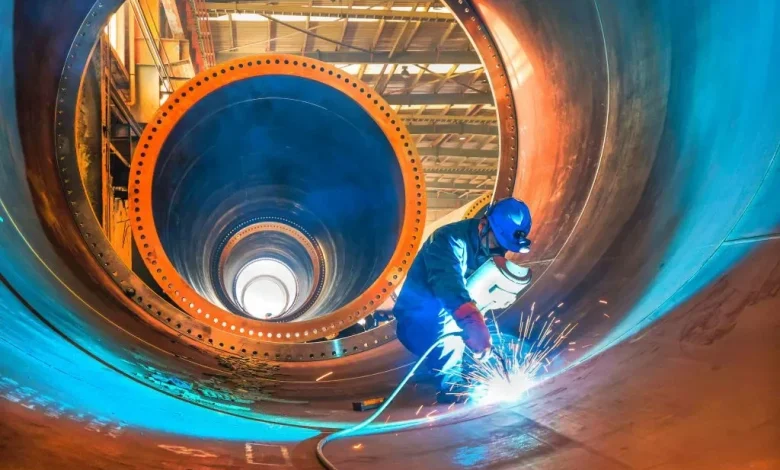China’s new green order It sees climate policy as colonial leverage

“I believe that history will judge today’s efforts as pivotal,” Barack Obama proclaimed in 2015, as he and Xi Jinping stood together to ratify the Paris Agreement. COP21 was the high-water mark of climate multilateralism — a moment when politics, science, and public were briefly aligned. Nearly 200 nations pledged to hold global warming “well below” 2°C and to strive for 1.5 °C, a goal which seemed both urgent and achievable. For a fleeting moment, decarbonisation appeared to be a shared global project.
Ten years on, Donald Trump has waved aside decades of climate science as a “con job”, recently joining Saudi Arabia in sinking a landmark deal that would have cut global shipping emissions. Meanwhile, Europe, bound by the knots of its own climate bureaucracy, struggles to execute an ambitious industrial strategy. At COP30, Brussels will speak the language of leadership — but with diluted goals and waning momentum. Washington, turning inward as a newly unapologetic petrostate, may arrive only to heckle from the wings. The climate consensus is fracturing.
China will arrive in Belém with confidence — and control. Over the past decade it has built the world’s most complete clean-energy manufacturing base: it now produces well over 80% of global solar modules, leads the battery supply chain from raw materials to final assembly, and dominates the rare-earth mining and processing vital for EVs, wind turbines and electronics. Clean-energy projects around the world depend on components that pass through its industrial ecosystem. Put simply, Beijing controls the infrastructure of decarbonisation.
As the principal architect of the low-carbon era, China can build what others only promise — but at a price. For some, Beijing remains an indispensable partner in decarbonisation, able to mobilise capital, equipment and contractors faster and cheaper than Western institutions. But others are more cynical, regarding China’s strategy as a new form of green colonialism. China’s ascent as the world’s system-builder inspires as much admiration as unease.
With its grip on global supply chains, China has de facto control over certification regimes, pricing structures, and emergent standards for green finance, all of which increasingly govern market access. The electric-vehicle sector offers a glimpse of what is to come: Chinese batteries and EVs may have higher life-cycle emissions than Japanese or Korean rivals, yet cost and scale have allowed Beijing to dictate the terms of competition. Falling emissions are reinforcing China’s claim that state direction delivers results.
But the question remains whether a regime built for command can also build the cooperation on which global climate governance will stand or fall. Beijing’s path to decarbonisation is riddled with contradictions. China is both the world’s dirtiest industrial behemoth and its leading green architect. In 2024, China broke records for wind and solar installation, even as it approved more coal plants than at any point over the last decade. Critics interpret this as “green-washing” or bad faith, but for Beijing, it’s “sequencing” — the belief that industrial might in strategic sectors must come before emission cuts.
“Whoever builds the clean-energy economy will write the rules of the next world order.”
It is a transition philosophy without precedent. “The path, method, pace and intensity… must be determined by ourselves,” Xi Jinping has insisted. What has followed is a multi-trillion-dollar experiment: China is attempting to reach its dual carbon goals — peaking CO2 emissions before 2030 and achieving carbon neutrality by 2060 — without dismantling the largest industrial base on Earth.
For Beijing, industrial strength is the foundation of geopolitical power. Commanding roughly 35% of global manufacturing, with projections of 45% by 2030, manufacturing is not something China is willing to trade for climate credibility. On the contrary: it believes the world’s low-carbon future can only be built by those who still know how to make it.
In Beijing’s view, whoever builds the clean-energy economy will write the rules of the next world order — just as the United States once did through oil, arms and the dollar. Decarbonisation, by this logic, is statecraft, not climate stewardship. Domestically, it doubles as an insurance policy, securing water, food, and energy on China’s terms before scarcity and climate shocks arrive. This strategy grants Beijing the mandate to plan decades ahead and mobilise entire sectors.
China can also pursue policies that would be unthinkable in pure market economies. While Western governments set climate targets and leave delivery to the market, Beijing intervenes directly. Strategy is directed from the top, and capital is treated not as a market outcome, but as an instrument of national power. Policy banks funnel cheap finance into strategic sectors often years before they are commercially viable. State-owned firms absorb early risk, allowing new technologies such as carbon-neutral steel and advanced battery chemistries to be trialled without needing to turn a profit. Once a technology shows promise, the state withdraws protection and unleashes a brutal survival-of-the-fittest competition: the strongest are rapidly scaled up, while the rest are abandoned.
Contemporary Amperex Technology Ltd. (CATL) is a product of this system. A decade ago, China granted subsidies to dozens of battery startups before ruthlessly pruning the sector. Graveyards of failed EV startups now ring the outskirts of Hangzhou and Nanjing. CATL survived the cull, and was quickly scaled up into a “national champion”. Today, its dominance in battery technology anchors China’s lead in the global EV supply chain.
It is not tidy or efficient, but waste and failure are built into the system. Duplication builds capacity; missteps refine technology. Beijing doesn’t care about short-term profitability, instead incubating firms that will dominate the industries of the future.
Foreign expertise has also helped to accelerate industrial innovation. Tesla’s experience in China is a case in point. Lured into Shanghai with tax breaks, land grants and regulatory exemptions, it was welcomed not just as an investor but as a benchmark against which domestic firms would be forced to compete. Silicon Valley might have interpreted this move as market openness — for Beijing, though, it was a controlled experiment in technological transfer. Within a year, nearly 90% of Tesla’s Shanghai-made components were sourced locally. The company thrived, but so did the rivals it helped train. Elon Musk laughed off BYD as a joke in 2011; by 2023, it was outselling him. China hosted the world’s most celebrated innovator to train its own, and then scaled beyond his reach.
This dual system — ruthless competition steered by state direction — has already delivered China’s overwhelming manufacturing dominance in solar panels, batteries, and electric vehicles. Now Beijing is applying it to the dirtier, harder-to-abate sectors.
Greening heavy industry is one of the toughest frontiers in climate action. Steel, cement and aluminium are responsible for a third of China’s emissions, and more than half of global output. These sectors are the backbone of the modern economy — and they are almost entirely coal-dependent. Replacing that foundation is technically daunting and financially risky; blast furnaces burning at over a 1,000°C degrees cannot be wished away. Instead they must be carefully reengineered with new, low-carbon technologies. Those alternatives, including hydrogen-based steelmaking, carbon capture and low-carbon smelting, demand deep pools of capital and years of industrial trial and error. China’s system is built to keep funding the effort until one of them works.
Now, China has an opportunity to experiment with changes to production without disrupting growth. A prolonged slump in the property sector and population decline have lowered demand for carbon-intensive cement and steel, driving a fall in emissions. This slowdown affords Beijing breathing room to trial hydrogen and carbon capture technologies, all while embedding its own certification systems into supply chains.
The stakes are enormous: Beijing is betting that it can decarbonise the world’s largest industrial base and then export the model abroad. Success would not only yield clean factories, but would grant China the power to define what counts as “green” and thus shape the standards of global trade.
Beijing is seizing the opportunity to build a parallel economic order. Through carbon certificates, “zero-carbon” industrial parks, and an expanding taxonomy of green finance, it is embedding Chinese standards into global regulation and capital flows. These mechanisms are fast becoming the plumbing of 21st-century commerce: converting carbon footprints into tradable data, and data into passports for goods and investment. In the coming decade, carbon content will likely become a default value — printed on everything from car batteries to shipping containers. Beijing wants to be the one writing the label.
The longer the United States and its allies delay a credible counteroffer, the more likely it becomes that the world’s low-carbon future will be wired, financed, and standardised in Beijing. Western policymakers increasingly recognise the scope of China’s industrial strategy — but their responses remain piecemeal and defensive: tariffs, tax credits, and talking points in place of coordinated vision. As COP30 convenes in Belém, that asymmetry is laid bare. All eyes are on China.





